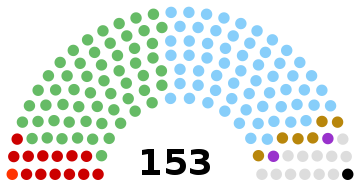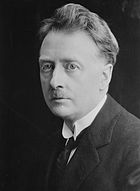September 1927 Irish general election
| |||||||||||||||||||||||||||||||||||||||||||||||||||||||||||||||||||||||||||||||||||||||||||||||||||||
152 of 153 seats in Dáil Éireann 77 seats needed for a majority | |||||||||||||||||||||||||||||||||||||||||||||||||||||||||||||||||||||||||||||||||||||||||||||||||||||
|---|---|---|---|---|---|---|---|---|---|---|---|---|---|---|---|---|---|---|---|---|---|---|---|---|---|---|---|---|---|---|---|---|---|---|---|---|---|---|---|---|---|---|---|---|---|---|---|---|---|---|---|---|---|---|---|---|---|---|---|---|---|---|---|---|---|---|---|---|---|---|---|---|---|---|---|---|---|---|---|---|---|---|---|---|---|---|---|---|---|---|---|---|---|---|---|---|---|---|---|---|---|
| Turnout | 69.0% | ||||||||||||||||||||||||||||||||||||||||||||||||||||||||||||||||||||||||||||||||||||||||||||||||||||
| |||||||||||||||||||||||||||||||||||||||||||||||||||||||||||||||||||||||||||||||||||||||||||||||||||||
 Percentage of seats gained by each of the five biggest parties, and number of seats gained by smaller parties and independents. | |||||||||||||||||||||||||||||||||||||||||||||||||||||||||||||||||||||||||||||||||||||||||||||||||||||
| |||||||||||||||||||||||||||||||||||||||||||||||||||||||||||||||||||||||||||||||||||||||||||||||||||||
The September 1927 Irish general election was held on Thursday, 15 September 1927. The newly elected members of the 6th Dáil assembled at Leinster House on 11 October when the new President of the Executive Council and Executive Council of the Irish Free State were appointed. The result was a Cumann na nGaedheal minority government.[1]
Campaign[]
The second general election of 1927 was caused by the uncertain political arithmetic within Dáil Éireann. Only three votes separated the two largest parties, Cumann na nGaedheal and Fianna Fáil, and the government was very unstable. When, during August, Fianna Fáil decided to enter the Dáil, it gave its support to the Labour Party's motion of no confidence in the Cumann na nGaedheal government and to replace it with a Labour-led coalition with Labour leader Thomas Johnson as President of the Executive Council. The Labour Party was supported by Fianna Fáil and the National League Party. On the other hand, the Cumann na nGaedheal government had the backing of the Farmers' Party and most of the Independent TDs. When the vote was taken, John Jinks, a National League TD, failed to attend. The Deputy Leader of the Labour Party, Thomas J. O'Connell, was away in Canada at the time and also was unable to participate in the crucial vote. As a result, the vote was a dead heat and the Ceann Comhairle voted with the government. The motion failed.
W. T. Cosgrave realised that this situation could not continue and a general election was called in the hope of providing a clear result. Cumann na nGaedheal fought the election on its record in government so far. Fianna Fáil was the new party on the political scene with new policies and the promise of self-sufficiency. The Labour Party had done well on its last outing and was hoping, and was predicted, to win extra seats, in spite of internal divisions. The Farmers' Party represented the needs of agricultural labourers. Sinn Féin had been reduced by the founding of Fianna Fáil from 47 to five seats in the first 1927 election, and did not contest a single seat this time, due to lack of financial assets.
Result[]
| Election to the 6th Dáil – 15 September 1927[2][3][4] | ||||||||
|---|---|---|---|---|---|---|---|---|
 | ||||||||
| Party | Leader | Seats | ± | % of seats |
First pref. votes |
% FPv | ±% | |
| Cumann na nGaedheal | W. T. Cosgrave | 62 | +15 | 40.5 | 453,028 | 38.7 | +11.3 | |
| Fianna Fáil | Éamon de Valera | 57 | +13 | 37.3 | 411,777 | 35.2 | +9.1 | |
| Labour | Thomas Johnson | 13 | –9 | 8.5 | 106,184 | 9.1 | –3.4 | |
| Farmers' Party | Michael Heffernan | 6 | –5 | 3.9 | 74,626 | 6.4 | –2.5 | |
| National League | William Redmond | 2 | –6 | 1.3 | 18,990 | 1.6 | –5.7 | |
| Irish Worker League | James Larkin | 1[2] | New | 0.7 | 12,473 | 1.1 | – | |
| Town Tenants' Association | 0 | 0 | 832 | 0.1 | 0 | |||
| Independent | N/A | 12 | –4 | 7.8 | 92,959 | 7.9 | –5.5 | |
| Spoilt votes | 21,886 | — | — | |||||
| Total | 153 | 0 | 100 | 1,192,755 | 100 | — | ||
| Electorate/Turnout | 1,730,177 | 69.0% | — | |||||
^ Although Jim Larkin won a seat in Dublin North, he was subsequently almost immediately disqualified from the position due to declaring bankruptcy as a result of losing a libel case brought against him by William O'Brien. As a result, a by-election was held for his seat on 3 April 1928. The winner of that by-election was Vincent Rice of Cumann na nGaedheal, who defeated Kathleen Clarke of Fianna Fáil and Larkin who ran again to try to regain his seat.
As stated above, Sinn Féin had won five seats in the first 1927 election, but did not contest a single seat this time. As a result, the number of seats it held decreased from five to zero.
Following the general election, Cumann na nGaedheal was able to form a minority government with the support of the Farmers' Party and other Independent TDs. The Labour Party leader, Thomas Johnson, lost his seat in the election and subsequently retired from politics.
Voting summary[]
Seats summary[]
First time TDs[]
- William Aird
- Seán Brady
- Robert Briscoe
- Edmond Carey
- Michael Connolly
- Eamonn Cooney
- Peter de Loughry
- Patrick Gorry
- Stephen Jordan
- William Kent
- Arthur Matthews
- Joseph Mongan
- Daniel O'Leary
- Martin Sexton
- Richard Walsh
Outgoing TDs[]
- Austin Stack (Retired)
- Kathleen Clarke (Lost seat)
- John Jinks (Lost seat)
- Thomas Johnson (Lost seat)
- Timothy Quill (Lost seat)
- James J. Walsh (Retired)
See also[]
References[]
- ^ Pollock, James K. (1928). "The Irish Free State Elections of September, 1927". American Political Science Review. 22 (1): 154–156. doi:10.2307/1945072. ISSN 0003-0554.
- ^ "6th Dáil September 1927 General Election". ElectionsIreland.org. Archived from the original on 3 June 2009. Retrieved 8 April 2009.
- ^ "Dáil elections since 1918". ARK Northern Ireland. Archived from the original on 27 November 2020. Retrieved 13 April 2009.
- ^ Dieter Nohlen & Philip Stöver (2010) Elections in Europe: A data handbook, pp1009-1017 ISBN 978-3-8329-5609-7
- 1927 elections in the Irish Free State
- 1927 in Irish politics
- Elections in the Irish Free State
- General elections in the Republic of Ireland
- 6th Dáil
- September 1927 events






